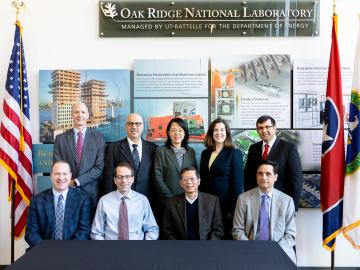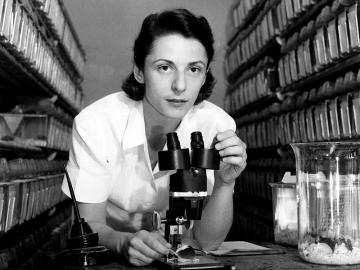Filter News
Area of Research
- (-) Clean Energy (37)
- Advanced Manufacturing (6)
- Biology and Environment (1)
- Building Technologies (1)
- Climate and Environmental Systems (1)
- Computational Engineering (1)
- Computer Science (7)
- Fusion Energy (6)
- Materials (32)
- National Security (4)
- Neutron Science (16)
- Nuclear Science and Technology (8)
- Quantum information Science (3)
- Supercomputing (19)
- Transportation Systems (1)
News Type
News Topics
- 3-D Printing/Advanced Manufacturing (7)
- Artificial Intelligence (1)
- Bioenergy (4)
- Clean Water (3)
- Composites (2)
- Computer Science (5)
- Cybersecurity (1)
- Energy Storage (2)
- Environment (8)
- Grid (1)
- Machine Learning (1)
- Materials Science (5)
- Microscopy (1)
- Nanotechnology (1)
- Neutron Science (2)
- Nuclear Energy (1)
- Polymers (1)
- Security (1)
- Space Exploration (1)
- Sustainable Energy (7)
- Transportation (7)
Media Contacts

OAK RIDGE, Tenn., Dec. 12, 2019 — Oak Ridge National Laboratory and five leading building equipment industries will collaborate to improve the energy performance of heating, air conditioning and ventilation systems and investigate climate-friendly alternative refrigerants.

The life and legacy of Dr. Liane Russell – world-renowned for her groundbreaking genetics research in mice – will be celebrated during a symposium on December 20 beginning at 8:30 a.m. at Oak Ridge National Laboratory.

A technology developed at the ORNL and scaled up by Vertimass LLC to convert ethanol into fuels suitable for aviation, shipping and other heavy-duty applications can be price-competitive with conventional fuels

An international team of scientists, led by the University of Manchester, has developed a metal-organic framework, or MOF, material

Michelle Kidder, a researcher at the Department of Energy's Oak Ridge National Laboratory, has been selected as the 2019 recipient of the US C3E Research Award.

ORNL researchers created and tested new wireless charging designs that may double the power density, resulting in a lighter weight system compared with existing technologies.

A team of scientists found that critical interactions between microbes and peat moss break down under warming temperatures, impacting moss health and ultimately carbon stored in soil.

Researchers demonstrated that an additively manufactured hot stamping die can withstand up to 25,000 usage cycles, proving that this technique is a viable solution for production.

Researchers at the Department of Energy’s Oak Ridge National Laboratory have received five 2019 R&D 100 Awards, increasing the lab’s total to 221 since the award’s inception in 1963.

ORNL and The University of Toledo have entered into a memorandum of understanding for collaborative research.




